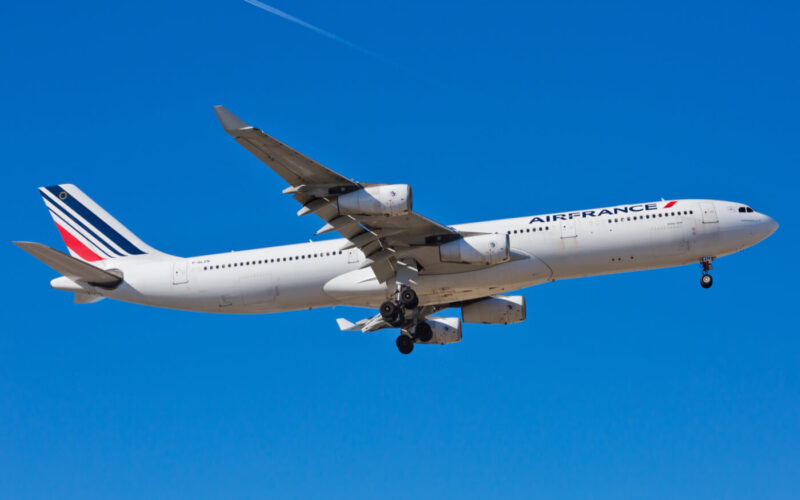Due to a lack of communication with air traffic control in Bogota, Colombia, an Airbus A340 operated by Air France was caught in windshear while taking off. However, the French Bureau of Enquiry and Analysis for Civil Aviation Safety (BEA) found that precautionary measures taken by the carrier after a similar incident months before may have saved the day.
On August 18, 2017, the Airbus A340-300, registration F-GLZO, was carrying out flight AF-681 from Bogota, Colombia (BOG) to Paris (CDG), France with 219 passengers and 10 crew members on board.
While it was at the holding position of runway 13R ready for takeoff, the anemometer was measuring wind from 211° at 1 knot. As the flight crew initiated the take-off run, the headwind increased to 11 knots, and when the aircraft reached rotation speed, it rapidly turned into a tailwind of 12 knots and a downdraft of 4 knots, reducing the airspeed by 6 knots.
“At this moment, six seconds after the aeroplane had left the ground, the Flight Management Guidance and Envelope Computer detected a windshear leading to a red “WINDSHEAR” reactive message being displayed for 15 seconds on the Primary Flight Display (PFD) and the “WINDSHEAR” audio warning being repeated three times,” the BEA states in the final report.
The flight crew did not modify the aircraft configuration and the angle of attack kept increasing until the “Alpha Protection” system was triggered, for four seconds. The tailwind speed started decreasing and both the calibrated airspeed and the rate of climb increased. The aircraft eventually passed the runway threshold with a satisfactory margin of altitude. From this point, the flight continued normally and reached the destination safely.
With the airplane thrust already set to Take-Off Go Around, the flight crew had limited options to act. Thus, the BEA emphasizes that the best management of windshear risk is prevention.
But to do so, Bogotá El Dorado Airport would need to be equipped with the proper systems that would inform the air traffic control of windshear. This is not the case currently. The BEA recommends a risk assessment from the Civil Aviation Authority of Colombia and, if needed, the installation of the proper equipment.
Additionally, it recommends a change in procedure that would require air traffic controllers to give departing flight crews the wind data from both ends of the runway. As a consequence of the incident, Air France had issued a NOTAM for the crew to request that information from controllers.
Finally, the BEA points at the lack of relevant information available to the French crew simply due to the fact that other conversations held by ATC were made in Spanish. “The controller cleared several crews for take-off shortly before the Air France flight and gave them the latest wind information each time. This information, transmitted in Spanish, could have been of interest to the crew of this serious incident,” states the report.
A life-saving precaution?
On March 11, 2017, five months before the incident, another Air France A340 registered F-GLZU experienced an abnormally long take-off at Bogota airport. As a consequence, the French carrier had increased the take-off safety margins for flights carried out on the A340-300, reducing the aircraft’s take-off weight. According to the BEA, the difference in weight may have been decisive in the plane’s capacity to recover from the windshear, and might have prevented a crash.

